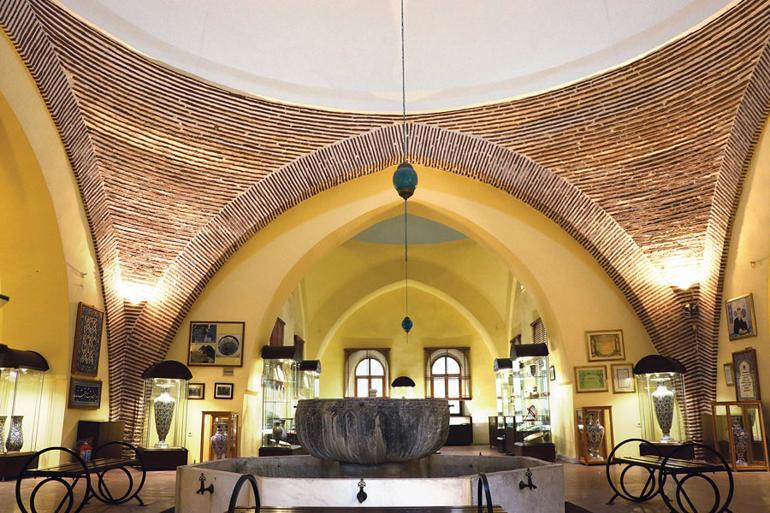
The Kütahya Tile Museum, home to 500 artworks, presents the historical development of the art of tiles, displaying many findings from the Seljuk and Ottoman periods.
The tile museum was established in 1999 after the Culture and Tourism Ministry restored an Ottoman-era madrasah, believed to have been built between 1411 and 1412, in the Paşamsultan neighborhood. The ministry had acquired it from the previous owner, the General Directorate for Foundations.
Visitors of the museum witness the historical development of tiles.

Speaking to the state-run Anadolu Agency, Kütahya Museum Director Metin Türktüzün said the western city is the capital of tiles and the museum is an important center that sheds light on the history of tile.
“The artifacts in the museum are too precious. They are Kütahya and İznik tiles. They are all hand-made tiles. The oldest artifacts exhibited are 700-year-old tiles from the Seljuk period. Remnants of tiles from the excavations in the Seljuk period’s Kubadabad Palace in the Central Anatolian province of Konya and the 16th-century İznik tiles taken from the Topkapı Palace, are on display here. Other artifacts are from the last century,” he said.
Türktüzün stated that most of the tile works belonging to the last century were donated by Rifat Çini, the owner of the Azim Çini Factory, which is one of the oldest tile factories in Kütahya.
He said İznik and Kütahya tiles began to be produced in the 14th century, surviving until today.
“Kütahya and İznik tiles have different properties. İznik tiles were made for palaces. Kütahya tiles are predominantly for the ordinary people’s use. The works of art are continued from the past to the present. The tile works have been continuing since the past and conveyed to future generations through today’s tile masters. Many families in Kütahya make their living from the tile making,” he said.
Baked in wooden ovens
Türktüzün said tile production became easier compared to the past, when they would be “baked” in hot temperatures in wooden ovens.
“The tile mud is shaped by the hands of a master and then turned into biscuits after being baked. Then, designs are made on the tiles by the master again and they are baked in 950-degree ovens. Tiles were used to be baked in wooden ovens in the past, but now they are baked in electricity ovens. Nearly all of the works exhibited in our museum are the tiles baked in old wooden ovens,” the director said.
Türktüzün said the three-domed tile museum opens to a vaulted hall and two rooms, adding, “In the tomb section of the museum, a tiled coffin where the body of Yakup Çelebi II rests is displayed. The foundation inscription on the left of the entrance door to the museum belongs to the destroyed madrasah. At the entrance of the museum is the second largest stone inscription, which was discovered by Yakup Çelebi and is written in Ottoman Turkish.”
He also noted that thousands of local and foreign tourists visit the Kütahya Tile Museum every year.